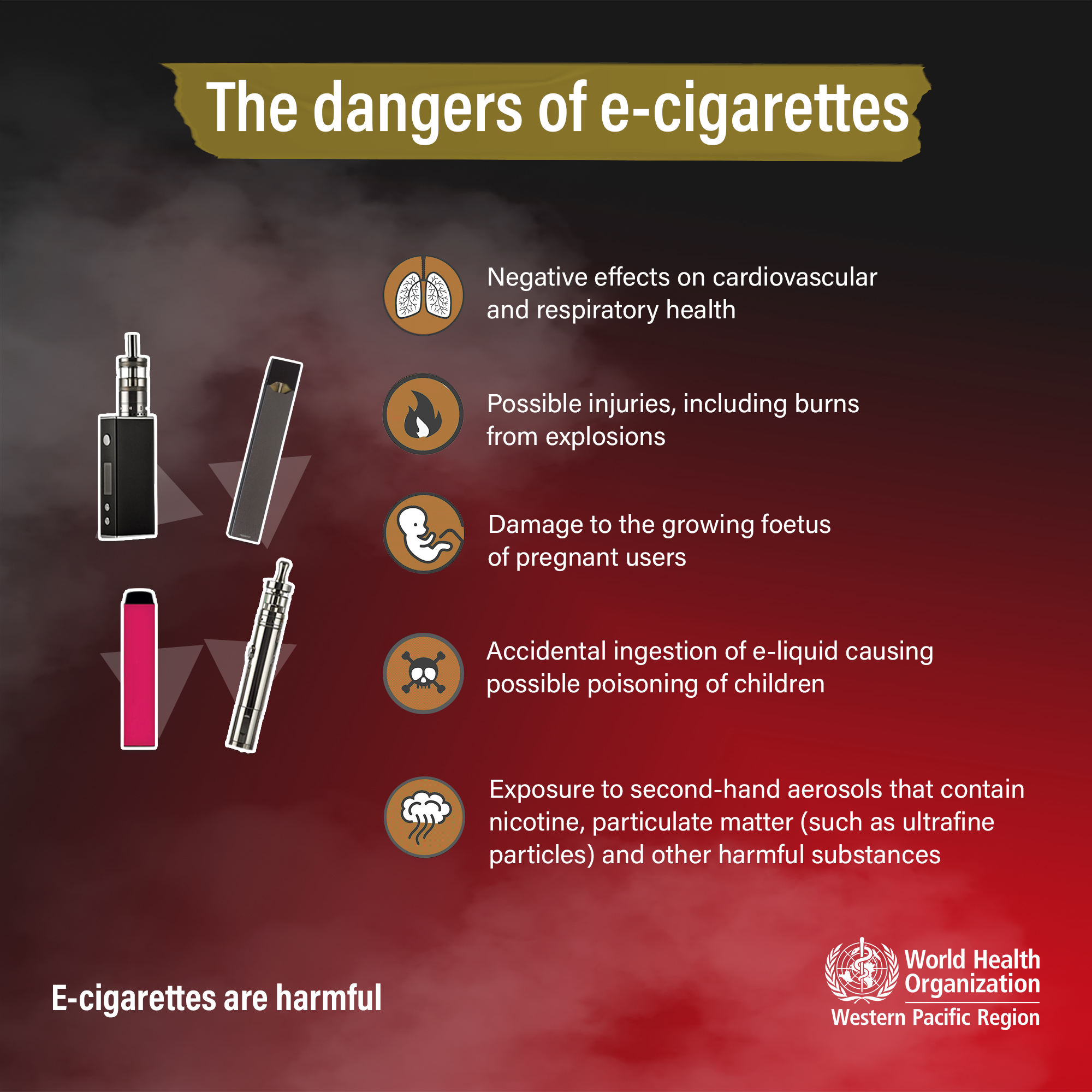Electronic cigarettes, commonly known as e-cigarettes or vapes, are harmful products that pose significant health risks despite often being perceived as safer alternatives to traditional cigarettes.
Established Health Risks
Nicotine Addiction: Most e-cigarettes contain nicotine, a highly addictive substance that harms adolescent brain development and maintains dependence.

Respiratory Damage: Inhaling aerosolized e-liquid causes:
- Lung inflammation and irritation
- Increased risk of bronchitis and asthma exacerbation
- Impaired lung function
Cardiovascular Risks: Nicotine exposure elevates heart rate and blood pressure, increasing cardiovascular disease risk.
Chemical Exposure: E-cigarette aerosol contains potentially harmful substances including:
- Ultrafine particles damaging deep lung tissues
- Diacetyl (linked to bronchiolitis obliterans)
- Volatile organic compounds
- Heavy metals (e.g., nickel, tin, lead from coils)
Additional Concerns
EVALI (E-cigarette or Vaping Use-Associated Lung Injury): A severe, sometimes fatal lung illness strongly linked to vitamin E acetate in THC-containing products and other additives.
Youth Vulnerability: Flavorings and marketing tactics target youth, leading to nicotine addiction and serving as a potential gateway to combustible tobacco products.
Uncertain Long-Term Effects: As relatively new products, the full extent of long-term health consequences remains under investigation but indicates substantial risk.
Secondhand Exposure: E-cigarette aerosol exposes bystanders to nicotine and other harmful chemicals.
While potentially less harmful than continued smoking for adult smokers who completely switch, e-cigarettes are not safe. Abstaining from all tobacco and nicotine products, including e-cigarettes, is the best health choice.











